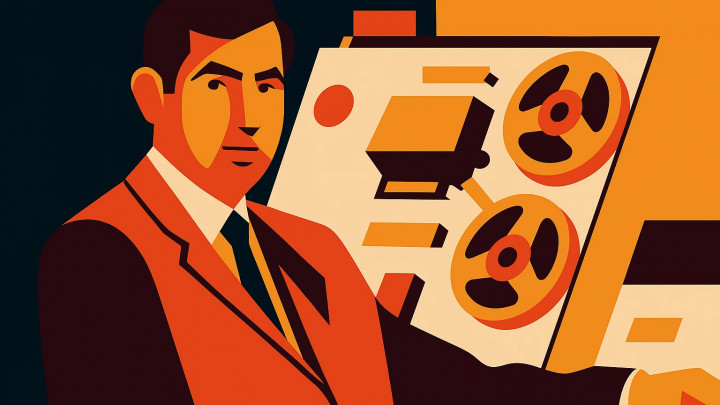Sound Like a Native: Unlock Your Fluency with the Shadowing Technique
Ever feel like you're stuck in your language learning journey? You can read articles and understand movies, but when it’s your turn to speak, the words get stuck, your pronunciation feels clumsy, and the conversation just doesn't flow. If this sounds familiar, the shadowing technique might be the game-changer you’ve been looking for. This powerful method does more than just expand your vocabulary; it fundamentally rewires your brain to the rhythm, music, and sounds of your target language, leading to a dramatic improvement in your speaking skills.

What Exactly Is Shadowing, and Why Does It Work?
The concept of shadowing is beautifully simple: you listen to a native speaker's audio and repeat what they say out loud, almost instantly, with just a split-second delay. You are, in effect, a "shadow" following the speaker's voice.
But why is this simple exercise so incredibly effective? The magic lies in how it engages your brain.
-
It Directly Connects Hearing to Speaking: In our brain, the areas responsible for auditory processing and motor control for speech (moving your tongue, lips, and vocal cords) are deeply interconnected. Shadowing forges a superhighway between them. Instead of listening, translating in your head, and then trying to form a sentence, the technique forces you to mimic sounds directly. Think of it as a workout for your mouth, building muscle memory for sounds and movements that may not exist in your native tongue.
-
It Bypasses Your Internal Translator: One of the biggest hurdles to fluency is the constant mental act of translation. The speed of shadowing simply doesn't leave time for it. You're forced to process and produce the language on its own terms, which is a crucial step toward actually "thinking" in the language.
-
You Master the "Music" of the Language (Prosody): A language is more than just words. Its melody (intonation), rhythm, and stress (collectively known as prosody) are what make it sound natural. This is nearly impossible to learn from a textbook. Through shadowing, you instinctively absorb the natural cadence of the language, making your speech sound far more authentic and less "foreign."
What Are the Concrete Benefits of Regular Shadowing?
By incorporating shadowing into your routine, you can expect to see tangible results:
-
Drastically Improved Pronunciation and Intonation: This is the most immediate and noticeable benefit. You'll learn to form sounds correctly, place stress on the right syllables, and use a natural pitch, helping you to soften your accent and speak more clearly.
-
A Quantum Leap in Listening Comprehension: Because you have to listen with intense focus, your brain gets better at decoding the language in real-time. You'll start to naturally pick up on connected speech, reduced forms, and words that are often "swallowed" in fast conversation, making it much easier to understand native speakers in any situation.
-
Boosted Fluency and Confidence: Shadowing reduces hesitation. As common phrases and sentence structures become second nature, you'll be able to retrieve them much faster in a real conversation. This reduces the "umm"s and "ahh"s, leading to a massive boost in your confidence.
-
Cementing Vocabulary and Grammar: While the focus is on sound, the constant repetition deeply embeds words and grammatical patterns in your memory. You're not just learning a word; you're learning it in its natural context, as part of a "chunk," which is the most effective way to make it a usable part of your active vocabulary.
How to Get Started: A Step-by-Step Guide with Vocafy
Shadowing might sound intimidating, but with the right approach and tools, it's accessible to everyone. Vocafy is your perfect partner for this, as it can instantly turn any text you find interesting into a high-quality, natural-sounding audio lesson.
Step 0: The Right Mindset
Forget perfection. In the beginning, you will mumble, you will fall behind, and you will make mistakes. That's not just okay; it's part of the process. The goal is consistent effort, not flawless performance.
Step 1: Choose Your Audio Source
-
As a Beginner (or Intermediate): Start with short (1-2 minute), clear, and relatively slow audio. Upload a simple blog post, a children's story, or a textbook exercise into Vocafy. It’s helpful to have the text in front of you.
-
As an Advanced Learner: The world is your oyster! A news article, a TED Talk transcript, a passage from your favorite book—with Vocafy, any of these can become your next lesson.
Step 2: The First Listen (Get Acquainted)
Before you do anything else, just listen to the audio once or twice while reading the text. Get a feel for its rhythm, pace, and content.
Step 3: Shadowing with "Training Wheels" (Using the Text)
Start the audio and begin repeating what you hear, either in unison with the speaker or with a tiny delay (about half a second). Use the written text as a guide. Repeat this several times with the same short passage.
Step 4: "Blind" Shadowing (Without the Text)
Once you feel comfortable shadowing with the text, try it without looking. Rely only on your ears. This is the real challenge and where the most significant gains in listening and memory are made.
Pro Tip: Record Yourself! Use your phone's voice recorder while you shadow. Then, listen back to the original audio and compare it to your own recording. Where are the biggest differences? In the rhythm? The pronunciation of a specific sound? This is the ultimate feedback loop for targeted improvement.
Who Is It For? (And What Are the Pitfalls?)
-
A Challenge for Absolute Beginners: While not impossible, shadowing can be frustrating at a true beginner level (A1-A2), as the focus is on sound, not meaning. Simple "listen and repeat" exercises are often more beneficial at this stage. From an intermediate (B1) level onwards, it's pure gold.
-
It Demands Focus: This isn't a multitasking activity. You can't effectively shadow while checking your email. The good news? Even just 5-10 minutes of focused practice a day can yield incredible results.
-
Choosing Material That’s Too Difficult: This is the most common mistake and the fastest way to get discouraged. Always start with material at or just slightly above your current comfort level.
Conclusion: Your Path to Speaking Fluently
The shadowing technique is an intense workout for your brain and your mouth. It's not a magic wand, but with regular, focused practice, it is one of the fastest and most effective paths to achieving a natural accent, superior listening skills, and confident, flowing speech.
Vocafy takes the hassle out of finding the perfect audio. Any text that sparks your interest can become your personal language tutor with a single click. Upload your first text, press play, and take the first step toward not just understanding the language, but speaking it the way you've always wanted to. Start today.





